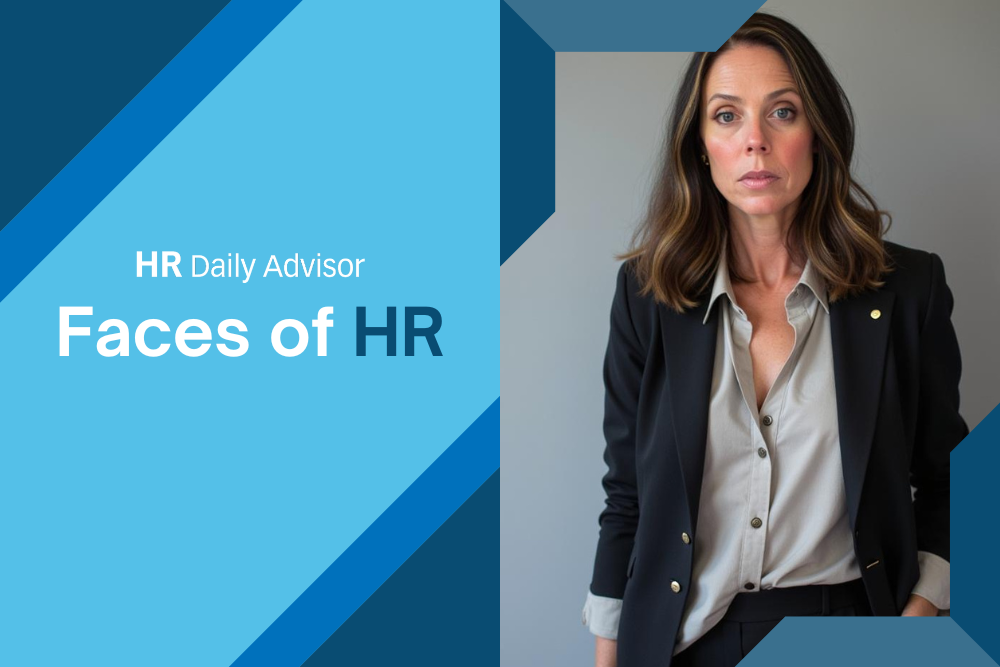Reid Walsh, Chief Human Resources Director at NEOGOV, proves that a passion for public service—not a linear career path—is a great foundation for modern HR leadership. Today, she’s focused on helping government organizations build engaged, high-performing workforces through smart, human-centered strategies.
Walsh’s current work is deeply informed by her extraordinary experience in the public sector. She previously served as the Deputy Secretary for Human Resources and Management for the Commonwealth of Pennsylvania, overseeing HR for a massive workforce of 80,000 employees and 21 unions. In this role, she spearheaded critical modernization efforts, including:
- Consolidating 26 separate HR offices into one shared services model.
- Developing a four-year HR strategy plan.
- Implementing data-driven service delivery.
- Leading the statewide teleworking initiative.
The Unconventional Path to People Strategy
Walsh’s entry into HR was distinctly unconventional, rooted firmly in mission-driven leadership and high-stakes operations.
“I took an unconventional path into the HR field,” she shares.
Her career began in the intense world of politics, serving as the Director of Operations for Governor Tom Wolf’s campaign and subsequently leading the inaugural celebration. That operational focus led to a role as Chief of Staff within government operations.
It was this journey through political operations and executive leadership that eventually led her to the Deputy Secretary of HR role, where she took on the challenging mandate of leading 26 HR shops into one and spearheading statewide hiring reform. For Walsh, a background in political operations and public broadcasting provided the perfect training ground for understanding organizational complexity, managing diverse stakeholders, and driving large-scale change—all core skills for today’s strategic HR leader.
In our latest Faces, meet Reid Walsh.
Who is/was your biggest influence in the industry?
There’s no question. Hands down, my biggest influence was my cabinet secretary, Sharon Minnick, now Vice Chancellor for Administration and Finance for Pennsylvania’s State System of Higher Education. She taught me that innovation is important in the government and not to be afraid of being an agent of change. Together, we worked on several projects that created lasting changes, including passing legislation that helped refine civil service, as well as the HR consolidation project.
What’s your best mistake and what did you learn from it?
When I was the Deputy Secretary of Human Resources and Management, and our consolidation project was recently completed, it came to my attention that many folks were struggling in their new roles. Someone pointed out to me that I needed to establish what they called a “kitchen cabinet.” What I hadn’t understood is that I needed to have peer influencers that would champion the cause and mission of our organization. I underestimated the power of those one-on-one conversations and the power of influence. As soon as I recognized this, I was able to course correct. It’s a lesson that made an incredible difference in how I manage and launch new initiatives into an organization.
What’s your favorite part about working in the industry? What’s your least favorite part, and how would you change it?
My favorite part is seeing the impact of my work. Watching our employees become happier and more engaged in their day-to-day work gives me great joy! The most challenging part is empathy burnout in HR. It’s something you must be conscious of, and at the end of the day HR leaders need to take extra care of themselves.
It sounds like through your experience you really care about people, and you want to help them feel safe and comfortable, which is important in the industry. Please elaborate here.
I think it’s important when in leadership positions to go back and recall and empathize when you were in those positions in your career. “Leader know thyself” is a really important component to addressing issues at all levels.
How can HR most effectively demonstrate its value to the leadership team?
First, understand that the leadership team is busy. If you’ve got specialized needs that are bothering them, even if they’re difficult, it’s important not to shy away from them. Understand what’s keeping them up at night and try to support them by addressing those needs directly. Small wins will help with everyday needs.
Second, data and information are crucial. Demonstrate data that supports what you’re trying to achieve to achieve buy-in.
Third, be meticulous about your core responsibilities like payroll and benefits administration. This will reduce any friction that might exist so that you can focus on what counts—impactful company initiatives and core operations.
Where do you see the industry heading in five years? Or are you seeing any current trends?
HR will only play more of a role as we move forward. The more data we can produce, the more seats we will have at the table. It’s important that we continue to show data that correlates to the initiative. Also, HR professionals must have a keen awareness of the business’s goals to stay in those conversations and continue to move the needle. It’s incumbent on us as HR leaders to be tied into AI—how are you embracing the technology but having critical conversations with leaders about their changing landscape? How are we supporting them in HR? Keeping an eye on the ball will be a big deal.
What are you most proud of?
I am proud of the changes in the Commonwealth of Pennsylvania that I helped make from a legislative perspective, so that we could be more efficient in how we hired employees. We reduced the time to hire so that we could deliver services faster to citizens of Pennsylvania. I played a key role in that and I’m proud of it.
Do you have any advice for people entering the profession?
Be curious. Learn everything. Find a mentor, one whose style you admire and ask if you can make time with them.


